Paper (and cardboard) is collected separately from residual waste. It is recycled as a secondary raw material for the production of new paper and cardboard. Waste paper is new paper. For a successful recycling process, it is important that waste paper and cardboard is clean and dry, and free of plastic and other contamination.
You can offer paper and cardboard in a container or at any of the environmental centres. > View your personal waste calendar
What belongs where?
You can recognise paper and cardboard that belong in the paper container by the recycling logo. This logo can be found on many paper and cardboard products.
Waste paper
Clean and dry:
- newspapers and magazines
- advertising leaflets without plastic sleeves
- guides and catalogues
- receipts
- tickets
- books and brochures
- small and large cardboard boxes
- paper bags and sacks
- wrapping paper, gift paper
- egg cartons
- corrugated board
- cardboard padding for products
- printing and copying paper (staples, paper clips or adhesive tape may remain in place)
- writing paper, drawing paper
- envelopes (paper and cardboard, also with window)
- unused (clean) paper wallpaper
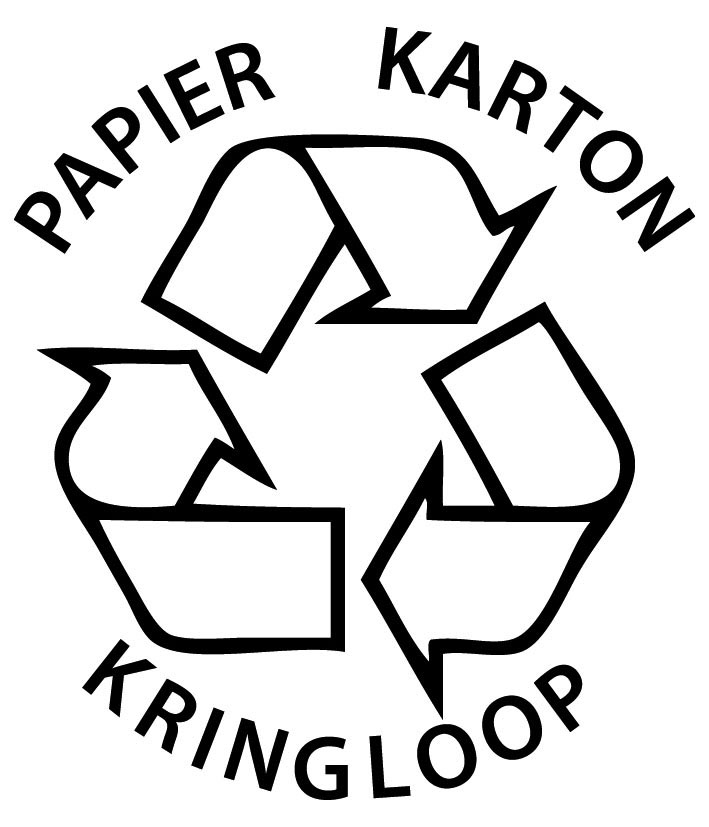
Not in the waste paper
Dirty or wet:
- cake boxes with food waste and plastic window, pizza boxes, baking paper and coffee filters
- tissues, tissues, kitchen paper, nappies, toilet paper: sanitary paper
- wallpaper: paper and vinyl
- Baking paper
This paper and cardboard belongs in the residual waste.
Paper and cardboard with plastic:
- plastic covers for (advertising) leaflets and magazines
- milk, yoghurt and juice cartons (beverage cartons): with the pmd
- liquid detergent packaging: liquid-proof carton
- train tickets: with single chip card
- frozen packaging: carton with plastic interior
- paper sandwich bags: paper and plastic
- laminated paper and board
- plastic bags and sacks: with the pmd
- plastic bubble envelopes
- binders and ring binders
- plastic storage folders
These products belong to the residual waste or - as indicated - at the pmd.
To the environmental street:
- soiled or painted paper (paint)
- photos and photo paper
- painted wallpaper
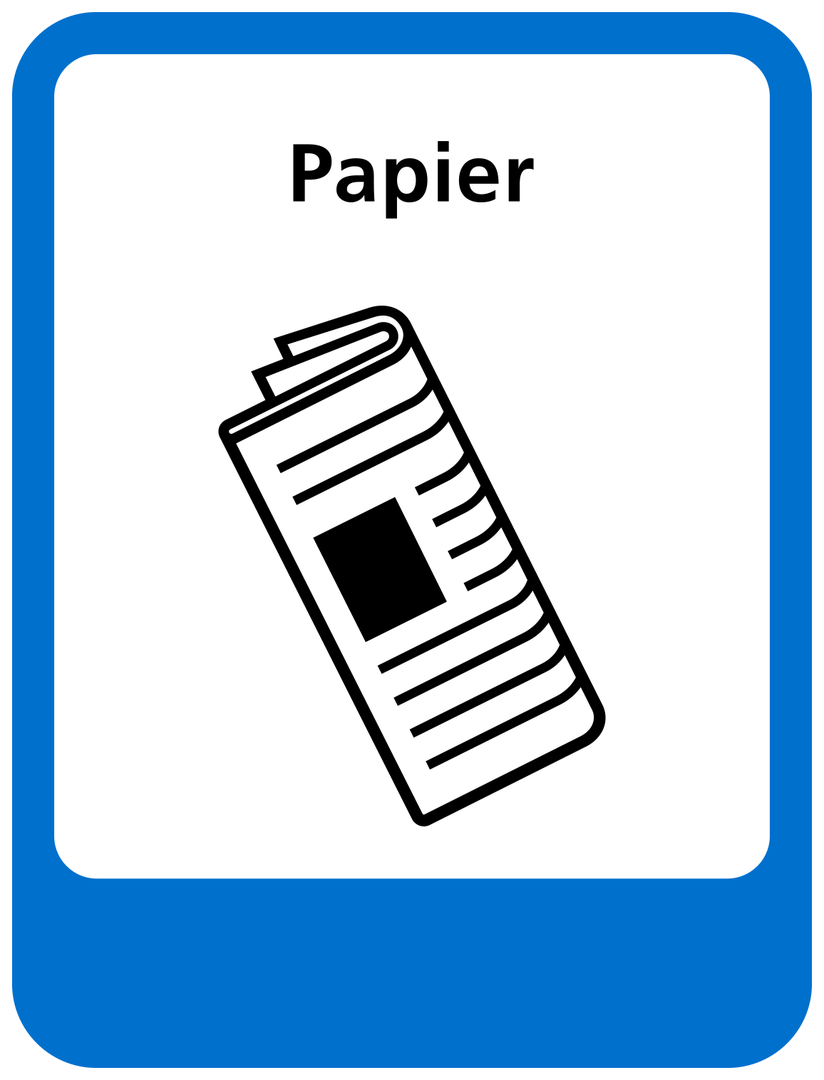 Collection is recycling
Collection is recycling
All the separately collected waste paper goes through scrap paper companies to paper mills. They use it directly as a secondary raw material in their production process. Collection is recycling: 86% of graphic paper and 88% of paper/cardboard packaging is recycled. Nothing is incinerated or landfilled. Because then we would lose it forever. So old paper and cardboard is a valuable raw material, well worth collecting separately.
Want to know more about paper recycling and sustainability?
Go to Paper Circular or Paperboard.co.uk.
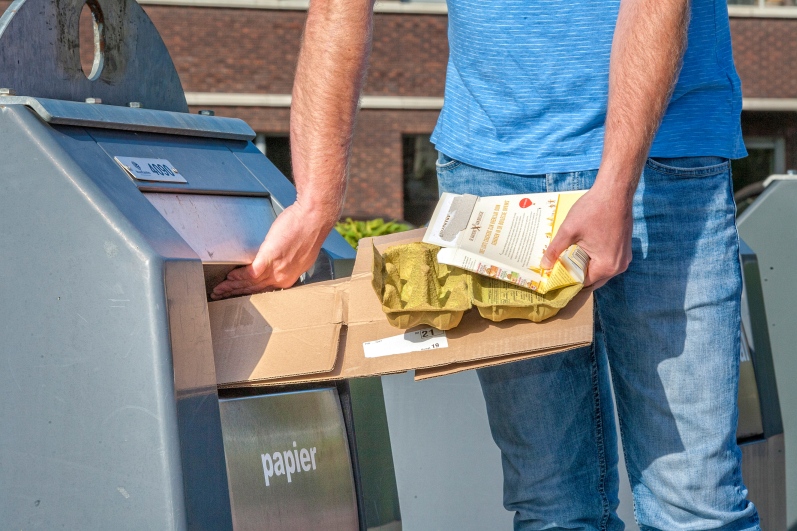
Small chemical waste (MSW) is waste containing substances that are hazardous to health and the environment. This includes chemicals that are toxic, flammable or otherwise harmful.
You can offer kca at one of the environmental centres. You can also take kca to the Kringlooplein bring in New Lekkerland.
What belongs where?
Well at the kca
- batteries
- batteries
- stain
- petrol
- pesticides and insecticides
- etching fluids, such as nitric acid and sulphuric acid
- bicycle batteries
- photofixer, photo developer
- wood preservatives
- hypodermic needles
- paint softener, paint cleaner
- mercury switches and mercury thermometers
- lacquer
- lamp oil
- glue
- medicines (old and surplus)
- oil products, such as waste oil, lamp oil, motor oil, petroleum and brake oil
- oil filters
- energy-saving bulbs and low-energy (LED) lamps
- fluorescent lamps
- paint products such as paint stripper, brush cleaner, brush softener, white spirit, thinner, paint, paint thinner and benzene
- liquid plunger
- benzene
- hydrochloric acid
Not with the kca
- ammonia
- cooking oil
- bleach
- floor polish
- chlorine
- cassette tapes
- cosmetics, such as nail polish
- frying fat
- glazing agent
- halogen lamps
- copper polish
- disinfectants and cleaners
- spirit
- toners (powder)
- paint brushes with hardened paint
- packaging (such as empty paint cans and buckets, benzene bottles and spray cans)
- videotapes
- silver polish
Offer conditions and tips kca
- Hand over your kca to the manager of the environmental street.
- Jars or other containers should be closed and have a sticker indicating which substance is in the jar.
- You can sometimes drop off old or surplus medicines at a pharmacy. Check with your own pharmacy.
- You can return batteries to all shops and companies that sell (products containing) batteries.
- Energy-saving bulbs, LED bulbs and fluorescent tubes can be handed in at the recycling centre and in special containers at various shops (such as supermarkets and DIY stores).
Vegetable, fruit, garden and food waste (GFT) is, for example, peelings and bones (food waste), pruning waste and spent flowers. Much of our waste is VGF waste. VGF waste is excellent for recycling.
You can offer GFT in a container or at any of the environmental centres.
> View your personal waste calendar.
What belongs where?
For convenience, we list the separation rules, categorised by: kitchen waste, fine garden waste, animals and waste separation tools.
With the organic waste
Kitchen waste
- vegetable, fruit and peelings
- tea bags and coffee pads
- potatoes, potato peels, bread, rice, dough, pasta
- leftovers, cooked or uncooked, leftovers
- columnar products such as cheese
- egg, fish and meat scraps, including bones and bones
- gravy and cooking fat (congealed)
- nut shells, (mussel) shells and eggshells
- loose tea and coffee grounds (paper filter may also be added)
- biscuits, sweets, chocolate, nuts, seeds, snacks
Fine garden waste
- flowers and plants
- small/fine pruning waste, foliage, cut grass and leaves
- garden and potting soil (small quantities)
- branches, stumps, trunks
Animals
- litter (hay, straw, sawdust) used for small rodents (such as guinea pig, rabbit, hamster) with their poo
- (leftover) animal feed
Tools for waste separation
- special compostable GFT collection bags
- use unbleached and unprinted kitchen paper to wipe up organic waste (sauce, grease, food scraps)
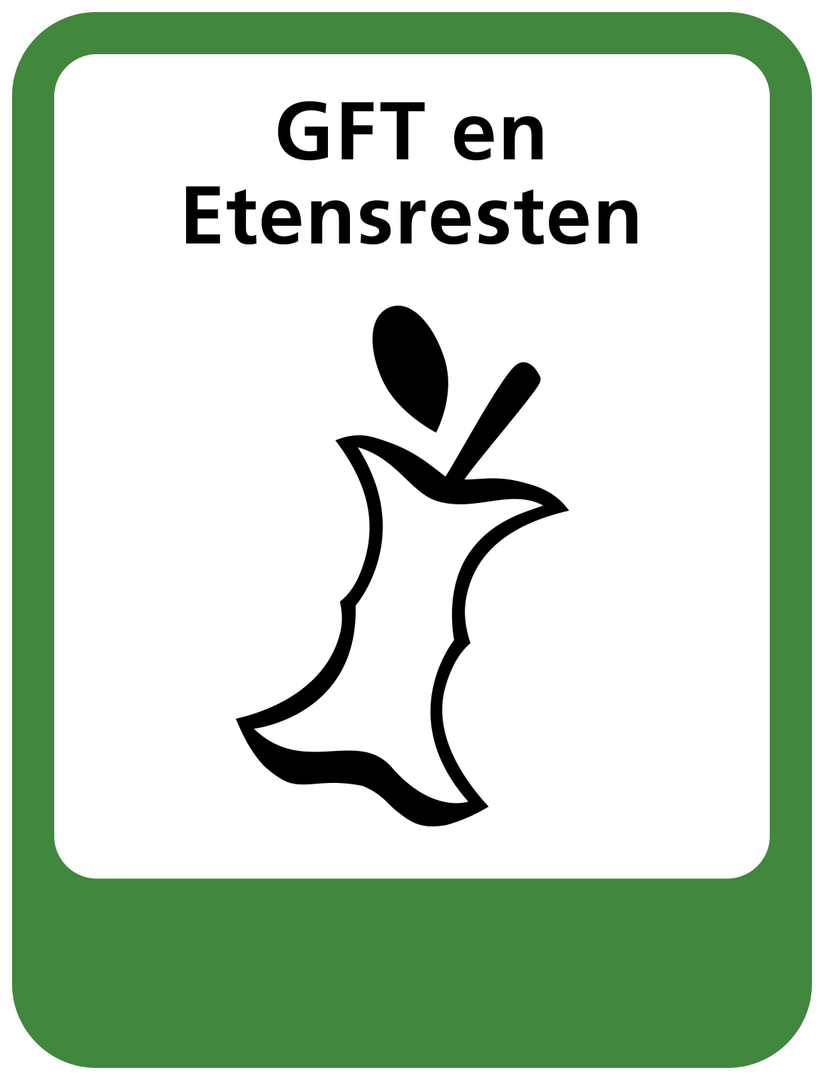
Not in organic waste
Kitchen waste
- packaging of any material
- plastic bags or sacks
- beverage packaging of dairy and fruit juices
- cheese crust
- coffee cups
- frying fat and oil
- chewing gum
Garden waste
- flower and plant pots, pottery
- stone, pebbles, gravel, sand, earth, clay
- fertiliser, pesticides, root canvas, hydro pellets
- beams, lumber, metal
Animals
- poop and dung from large animals, such as dog, cat, horse and cow
- cat litter and bird cage sand
- hair, frizz
- dead animals or offal
Tools for waste separation
- plastic bags
- empty collection bags
- textile bags
- storage trays
- metals, such as iron, tin, aluminium
- glass
- large pieces or quantities of paper, cardboard
- products and packaging made of plastic, including bioplastic or compostable plastic
- (disposable) products and packaging made of natural materials, such as plant pots, trays, plates, cutlery and straws made of bamboo, coconut, palm leaf, maize, (sugar) cane or straw
- textile
- cork
- ash and charcoal from smoke, hearth, stove and barbecue
- tobacco, cigarettes, cigars, butts, filters
- nappies, tampons, sanitary towels, incontinence materials
- dressings, plasters, medicines
- dust bags and their contents
- (fruit) stickers
- coffee mugs of any material
To the environmental street
- brick
- wood
- potting soil, garden soil, sand and earth
- prunings larger than 50 cm
- branches longer than 50 cm
Bioplastic should not be added to kitchen and garden waste
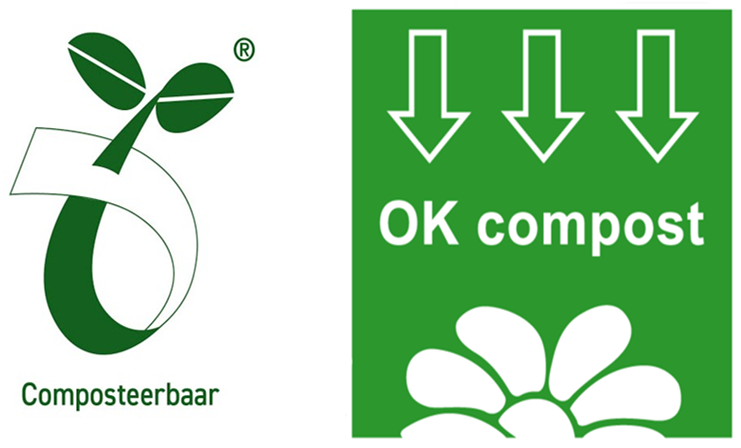 Plastic does not belong with the kitchen and garden waste. It contaminates the compost and should therefore be removed from the VGF waste before the composting process. Also, bags made of bioplastic do not belong in the kitchen and garden waste container, as they take too long to break down and compost. Bioplastic is plastic made from vegetable waste instead of petroleum or gas. Only special, compostable VGF bags with the Kiemplant logo or OK-Compost logo are allowed with VGF waste, as they are a convenient tool for separating VGF waste. These are available at various shops and supermarkets.
Plastic does not belong with the kitchen and garden waste. It contaminates the compost and should therefore be removed from the VGF waste before the composting process. Also, bags made of bioplastic do not belong in the kitchen and garden waste container, as they take too long to break down and compost. Bioplastic is plastic made from vegetable waste instead of petroleum or gas. Only special, compostable VGF bags with the Kiemplant logo or OK-Compost logo are allowed with VGF waste, as they are a convenient tool for separating VGF waste. These are available at various shops and supermarkets.
Want to know more? Then go to the website of Milieu Centraal.
Tips for a fresh GFT container
This will prevent your GFT container from stinking or having maggots (fly larvae) in it.
- Put the container in a cool place out of the sun.
- Do not throw damp waste into the container.
- Let cut grass dry for a day and drain damp food residues first.
- Pack quickly decaying and smelly food leftovers such as meat and fish in a newspaper.
- Clean the container regularly with water and possibly green soap. Do not use chlorine as this is harmful to the environment.
- Put an old newspaper or a layer of dry GFT waste at the bottom. You can also use special compostable or paper GFT bags. You can buy these in the supermarket. This makes emptying the container easier.
- Make sure the GFT container is empty (and clean) when you go on holiday. This is immediately a good time to air the container.
Tips for your GFT container when it freezes
In case of frost, the GFT waste may freeze in your container. As a result, it cannot be emptied. We would like to give you tips to help prevent this.
- Place your container in the lee of your home.
- Put your container in a frost-free place during the frost period, such as in a storage room or garage.
- Put newspaper at the bottom of the container or use a special compostable paper GFT bag. You can buy these in the supermarket. This makes emptying the container easier.
- Do not use salt to prevent freezing. Salt contaminates the GFT waste.
Reuse: compost and green gas
If you keep GFT separated from residual waste, it is recycled into things like compost and biogas (green gas). Compost is a soil improver in the garden or on the land. Green gas is an alternative to natural gas. VGF put in the residual waste is burnt with the residual waste and not recycled, this VGF is lost forever.
All glass bottles and jars from the glass containers are recycled.
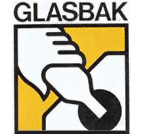 We collect glass packaging separately from residual waste. This way, they can be recycled. You can take them to a bottle bank. There is always one in your neighbourhood, for example in the neighbourhood or at the shopping centre. In the glass container may (glass) jars and bottles that have contained food, drinks or cosmetics. Make sure the packaging is empty. Lids and caps can be left on. Other small types of glass include under residual waste. You can offer large pieces of glass to one of the environmental centres.
We collect glass packaging separately from residual waste. This way, they can be recycled. You can take them to a bottle bank. There is always one in your neighbourhood, for example in the neighbourhood or at the shopping centre. In the glass container may (glass) jars and bottles that have contained food, drinks or cosmetics. Make sure the packaging is empty. Lids and caps can be left on. Other small types of glass include under residual waste. You can offer large pieces of glass to one of the environmental centres.
Bottles and jars that are allowed in the bottle bank can be recognised by the bottle bank logo on the label.
Glass that you do not put in the bottle bank, but throw in the residual waste, is not recycled but incinerated with the residual waste. This glass is lost forever. In the Netherlands, we already recycle 86% of all glass packaging. Our country leads the world in glass recycling.
What belongs where?
For convenience, we list the separation rules of packaging glass.
In the glass container
Glass bottles, such as:
- wine bottles
- beer bottles without deposit
- liquor bottles (note: no stoneware jugs)
- bottles of fruit juices, syrups and thick juices (made of glass)
Packaging glass, such as:
- jam jars
- spaghetti sauce bottles or jars
- olive oil bottles
- mayonnaise pots
- sambal pots
- spice jars
- transparent glass cream jars
- glass yoghurt pots
- baby food jars made of glass
Not in the glass container
At the residual waste
- light bulbs
- drinking glasses
- stone jars (e.g. gin)
- shards of glass
- crockery (such as coffee and tea cups and plates (porcelain))
To the environmental street
- car windows, glazing, window glass and other flat glass (in the special flat glass container)
- fluorescent lamps
- shower enclosure
- wired glass
- reinforced glass
- fibreglass insulation material
- glass wool insulation
- halogen lamps
- heat-resistant glass (such as oven dishes)
- plexiglass
- ornamental glass too big for the bottle bank
- energy-saving bulb
- mirrors
- stone pitchers (gin)
- uv lamps
- vase (glass or other material)
- sunbed lamps
Glass in the glass container is recycling
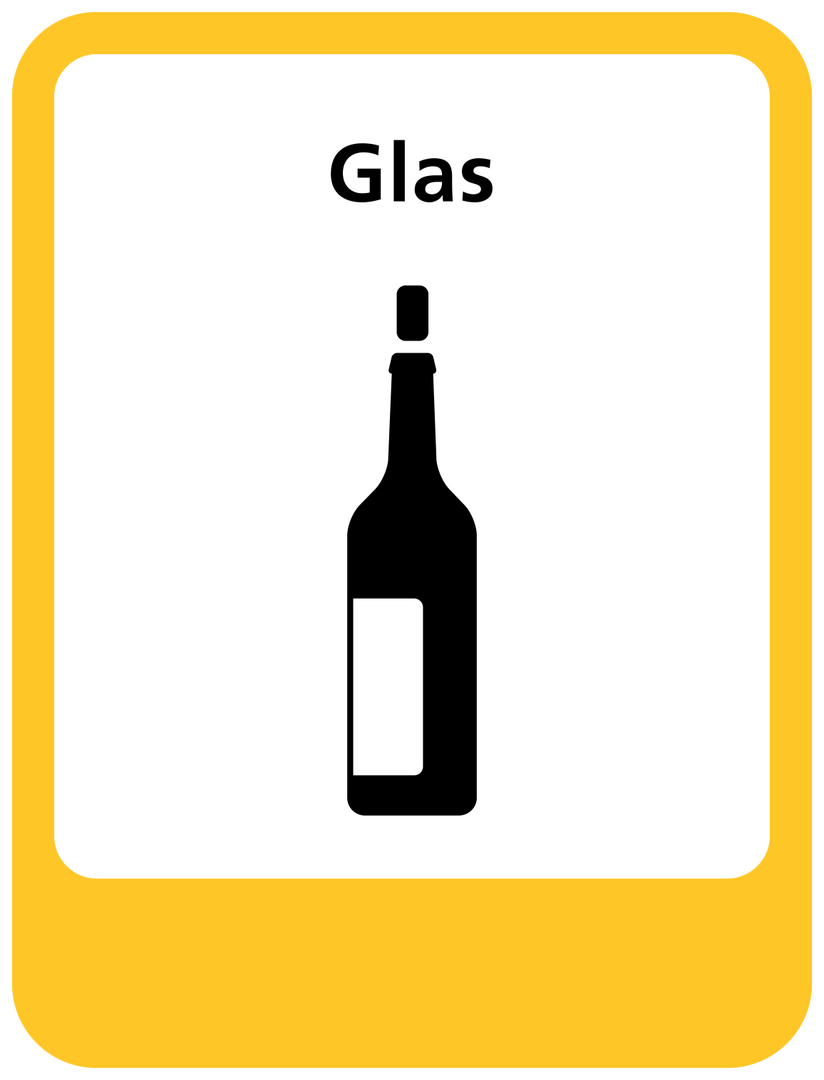 Glass can be endlessly and 100% recycled. Cullet is made into new glass bottles and jars. This can be done infinitely many times. Because once glass is made, it always remains glass and retains its good quality.
Glass can be endlessly and 100% recycled. Cullet is made into new glass bottles and jars. This can be done infinitely many times. Because once glass is made, it always remains glass and retains its good quality.
The cycle of glass
The cycle works as follows. We collect the glass from the glass containers with a collection car. The white (colourless) glass goes into one compartment of the car, and the other colours (green, brown) into another. This keeps the glass separated by colour. Exactly as you put it in the glass container. The collection vehicle transports the glass to the specialised glass recycling company.
At this company, the glass goes through an entire route past sophisticated separators. Contaminants such as lids, heat-resistant glass, ceramics, stone and porcelain are removed from the glass. You help enormously in an efficient recycling process if you only put packaging glass in the glass container and no waste. After the food waste is removed from the cullet, the clean cullet goes to glass factories as raw material. The glass factory melts the cullet and turns it into new bottles and jars. The bottles and jars go to the food industry. These pack products in them, which you buy. After use, you put the bottles and jars back in the glass container. Then the whole recycling process starts all over again.
21 kilograms of glass per person, 430 million kilograms in total
Thanks to this cycle, every shard of glass from the bottle bank stays in the glass packaging chain. In our country, 86% of the glass entering the market is collected for recycling. This is an average of 21 kilos per person, 430 million kilos of glass in total - every year. Recycling glass saves glassworks primary raw materials (sand, soda, lime) for glass production: 1 tonne of cullet saves 1.2 tonnes of sand and other raw materials. And they save 2.5% energy, and therefore CO2 emissions, with every 10% use of cullet. 1 tonne of cullet saves 0.6 tonnes of CO2-emissions in the chain.
Want to know more? Watch the video on the glass cycle
Will you be demolishing or rebuilding something soon? If you are working on a pre-1994 house or barn, it may contain asbestos. Asbestos used to be widely used in building materials, for example in roof sheathing, facade panels, corrugated sheets, caulk, pipes, ceiling tiles, chimneys, window sills and floor linings. Since 1993, the use of asbestos has been banned due to dangerous health risks. As asbestos ages, it can release dangerous fibres that can cause cancer if you inhale them. Therefore, asbestos must be removed safely and responsibly.
Identifying and safely removing asbestos
It is important to know how to recognise asbestos and remove it safely. If you want to do this yourself, there are rules you must follow. You can take the asbestos to one of our environmental centres. But before you do, you need to submit a demolition notification to your municipality. Sometimes you may also need a permit. You can find more information about this on your municipality's website.
On the website of Omgevingsdient Zuid-Holland Zuid and Utrecht region environmental department you will discover how to recognise asbestos.
Roadmap to remove asbestos
Please refer to the "Asbestos removal at home" roadmap at the website of Omgevingsdienst Zuid-Holland Zuid. Or at the website of Omgevingsdienst regio Utrecht.
Delivering asbestos to the waste disposal site
Before bringing asbestos to the waste disposal site, you must fill in a form notifying that you are going to bring asbestos. You can download this form. Give this form together with the demolition notification or permit to the manager of the waste disposal site. You must wrap the asbestos in special foil and tape it up tightly. You can get this foil and tape for free at our waste disposal site.
Rubble (construction and demolition waste) consists mainly of stony materials, wood, metal and plastic. Rubble is created when you build or renovate. When collecting rubble, we distinguish between clean rubble and contaminated rubble.
You can offer debris at one of the environmental centres.
What belongs where?
Clean rubble: to the waste disposal site
Uncontaminated debris, such as:
- brick
- concrete
- tiles
- gravel
- vowels
- ceramic material
- masonry
- natural stone
- paving stones
Contaminated debris: have it disposed of by a commercial party (company)
- contaminated rubble is mixed with contaminated soil (hazardous waste).
- non-workable debris its materials such as plasterboard, aerated concrete blocks and sand-lime bricks or rubble contaminated with glass or tar.
Reuse
Clean rubble is sieved and reused in civil engineering. For example, as paving material under road surfaces and in noise barriers and in the production of concrete and asphalt. Contaminated debris is cleaned first. Then it can still be reused. Materials such as wood and metal are recycled. New products made of wood and metal are made from them.
Residual waste is all the waste we (unfortunately) cannot yet recycle and reuse. Separating waste properly significantly reduces residual waste. Less residual waste means a smaller waste mountain, lower waste disposal costs. And reuse of valuable materials separated from residual waste.
You can offer household residual waste in a container or collection container, or at any of the environmental centres. Depending on where you live, you have one of two options for disposing of your residual waste: a container or collection container in your neighbourhood.
> View your personal waste calendar
What belongs where?
With residual waste
- car seat
- takeaway pizza box
- lighter (empty)
- as
- bath oil and bath foam residues
- biros
- (bank) cards
- wallpaper (leftovers and used)
- can opener (non-electric)
- spectacle frames (aluminium and plastic)
- lenses
- carbon paper
- CD
- cement bag (empty)
- condom
- contact lenses
- cups of e.g. coffee
- women's dressing
- slide
- floppy disk
- DVD
- films (wrapping or shrink wrap)
- light bulb
- human and animal hair
- dog waste (with bag)
- wood (from a picture frame, cutting board, rolling pin, or individual pieces of wood, for example)
- charcoal
- popsicle sticks
- Incontinence material
- candle and candle wax
- cheese rinds
- cat hair
- cat litter pellets or litter as standard
- chewing gum
- soiled kitchen roll paper
- kit case (empty)
- adhesive tape
- coloured pencil
- crystal
- cork of bottle
- cushion
- brush with hardened paint
- LP (long playing record)
- latex (from gloves, for example)
- nappies and nappy wipes
- make-up packaging with remnants
- highlighter
- nail polish bottles
- nylon thread
- oasis blocks or floral foam
- ear bud (cotton bud)
- stuffed animal
- binders and ring binders
- pans (for cooking)
- paper towels (contaminated)
- paper tablecloth (soiled)
- paper tissues (contaminated)
- brush
- Styrofoam (small amount)
- pills: empty (blister) strips
- pizza box soiled with food residues
- adhesive tape
- patch
- cleaning rags
- wig
- racket (wood, plastic or metal)
- cleaning wipes
- radiographs
- rubber
- sheep's wool
- shells of e.g. oysters and mussels
- shards of glass
- shards of porcelain
- painter's tape soiled with paint
- shoe polish
- cleaning wipes (disposable)
- abrasive sponge
- napkins with food leftovers
- crockery (broken)
- cigars and cigarettes
- slippers (plastic)
- chipboard (small quantities)
- aerosol empty
- stamp pad
- sticker
- marker
- fabric
- dust bag
- ostomy bags
- tobacco
- tampon
- toothbrush
- toothpick
- dental floss
- vacuum jug
- tissues (disposable tissues)
- toilet wipes
- rope
- garden hose
- bandages (first aid)
- packaging paper or cardboard with food residues
- soiled rags
- videotape
- vinyl wallpaper
- moist toilet paper
- rags soiled with oil, grease or paint
- football
- bird sand/ aviary sand
- fountain pen
- fireworks waste (used fireworks)
- wasco (chalk)
- cotton wool
- paper handkerchief
- soap residues
- silver bag for food (coffee, baby porridge)
- silver sand (birdcage)
Not in residual waste
Materials that can be added to another (separated) waste stream. These materials are recycled. They are used as raw materials in the manufacture of new products. Reusable raw materials that are collected separately include: paper and cardboard, PMD, VGF waste, glass and textiles.
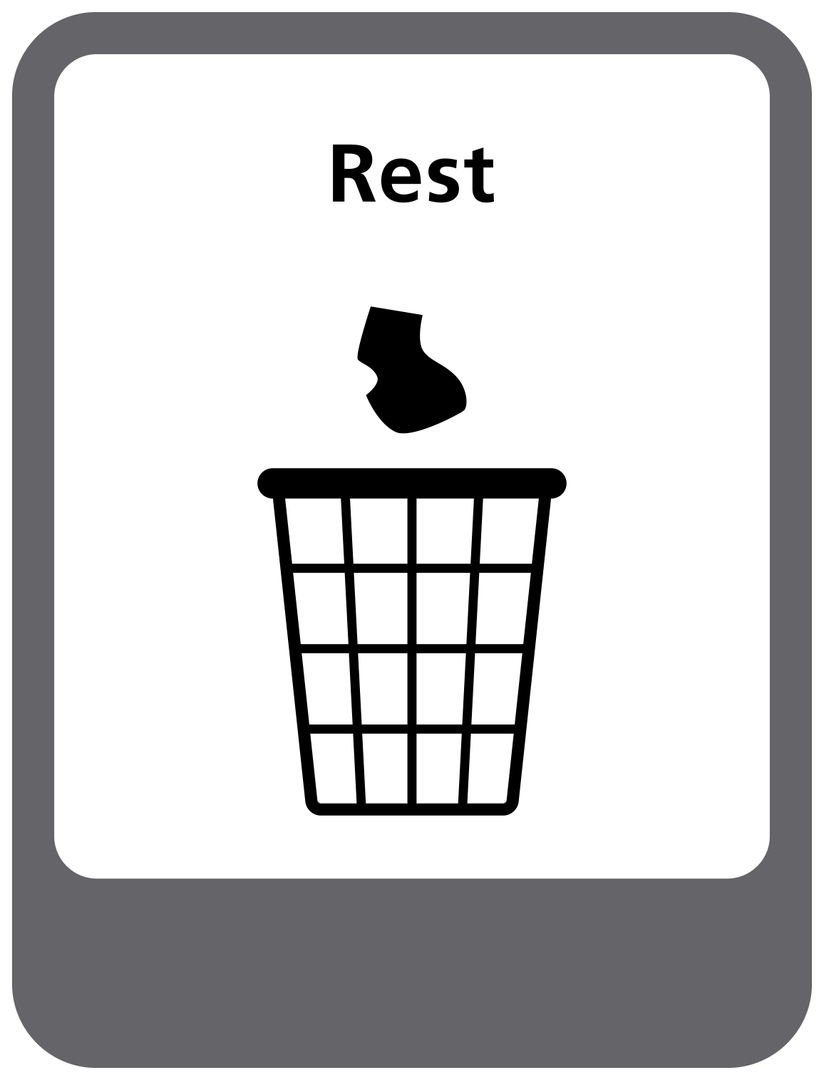
Introduction
Complaints are free advice for organisations. An opportunity to learn from mistakes and improve services and operations. It is important to handle complaints carefully. As a public waste service provider, we want to take an important step in this regard, which is why we have a complaints and notifications procedure. The objective of this procedure is to investigate, assess and oversee the handling and processing of complaints and notifications from residents.
Definition of complaint
A complaint is a verbal, telephone or written expression of dissatisfaction with the way Waardlanden behaved towards an external party in a particular matter has worn.
Definition of notification
A report is a written or oral (notification) expression about an event, observed observation or fact related to Waardlanden's duties.
The complaints coordinator
This officer has the following duties:
- Ensures registration of submitted complaints and notifications based on a fully completed 'complaint registration form';
- Ensures written acknowledgement of receipt to the complainant/petitioner;
- Ensures that the complaint/report is presented to the officer responsible for it (complaint handler) for handling;
- Monitors that the complaint/report is dealt with within the specified timeframe;
- Prepares a quarterly report to the board on registered complaints/reports. This will provide insight into the number and nature of the complaints, how they were handled and (if relevant) the measures implemented as a result of the complaints. No privacy-sensitive data will be included in the report.
Filing a complaint
A complaint can be submitted in writing or by e-mail.
- The letter of complaint shall be sent to: Waardlanden, attn. the complaints coordinator, PO Box 555, 4200 AN Gorinchem;
- By mail, complaints can be emailed to info@waardlanden.nl.
A complaint includes:
- Complainant's name, phone number and email address, if any;
- Details of the service about which the complaint arose;
- Relevant information about the complaint (facts, circumstances, dates or events complained about).
Submit notification
A report can be submitted verbally, in writing or by mail.
- Written reports should be sent to: Waardlanden, attn. the complaints coordinator, PO Box 555, 4200 AN Gorinchem;
- By e-mail, notifications can be mailed to info@waardlanden.nl;
- Oral reports can be made at 0183-681111 be reported.
- Notifications can be made at landlords.co.uk or in the Waardlanden app.
A notification contains:
- The reporter's name, telephone number and, possibly, an e-mail address;
- Relevant Information about the report (facts, circumstances, dates or events to which the report relates).
Treatment and handling of the complaint or notification
The procedure of handling and resolution is coordinated by the complaints coordinator:
- If the complaint concerns the complaints coordinator himself, he will be replaced by a person to be appointed by the Waardlanden board;
- The complainant will receive confirmation by e- mail or post from the complaints coordinator within 5 working days stating that the complaint has been considered and by whom it will be handled. The deadline for handling is set at 6 weeks;
- If the complaint cannot be dealt with within 6 weeks, the complainant will be informed in writing in good time (before expiry of the first period), stating the reason for the delay and the period within which a response will be given;
- If a complaint is not considered, the submitter will be informed by means of a reasoned mail/letter. The complainant can appeal this decision to the relevant municipality.
- The complaint handler ensures that:
- The file is studied to which the complaint relates and further gathers all relevant Information;
- Any further information from the complainant will be sought;
- It reviews the file and further information obtained and looks at it in relation to the complainant's arguments;
- The file is discussed with another person within the company as a check on their own interpretation (four-eye principle);
- A position is taken;
- That the complainant be informed of this position in writing with reasons;
- That this position is recorded in a complaint file;
- The complaints coordinator will receive a copy of the position taken.
Appeals
If the complainant (resident) does not agree with the handling of the complaint (including the decision not to handle a complaint), it can appeal to the municipality concerned. This must be done within three months of Waardlanden's position. There is also the option of submitting a complaint to the National Ombudsman. The National Ombudsman does not comment on policy or on the content of laws but rather on behaviour and performance of government tasks.
Duty of confidentiality
All persons involved in the handling of the complaint because of their position or their expertise have a duty of confidentiality regarding what has come to their knowledge in relation to the complaint and will, as far as possible, keep quiet about the facts and details of persons that have come to their knowledge in the process.
Registration of complaints and notifications
Employees of Waardlanden's customer contact centre use the AfvalRis system to register reports and complaints from residents about public spaces. The module 'MeldingKlacht' is available in AfvalRis (version 201045) for this purpose.
Situations
Various situations may arise. For each situation, we consider whether it is a report or a complaint. A (formal) complaint must be registered and retained. The complaint handler works/acts according to a set procedure. A notification is not subject to registration/archiving. A notification can usually be acted upon immediately. Waardlanden uses the 'Report complaint' module in the AfvalRls system to deal with reports. Upon registration in this system, a notification form filler is created.
Financial statements
- Annual accounts 2023
- Annual accounts 2022
- Annual accounts 2021
- Annual accounts 2020
- Annual accounts 2019
- Financial statements 2018










